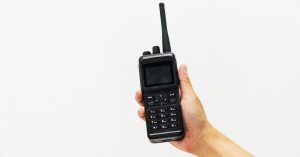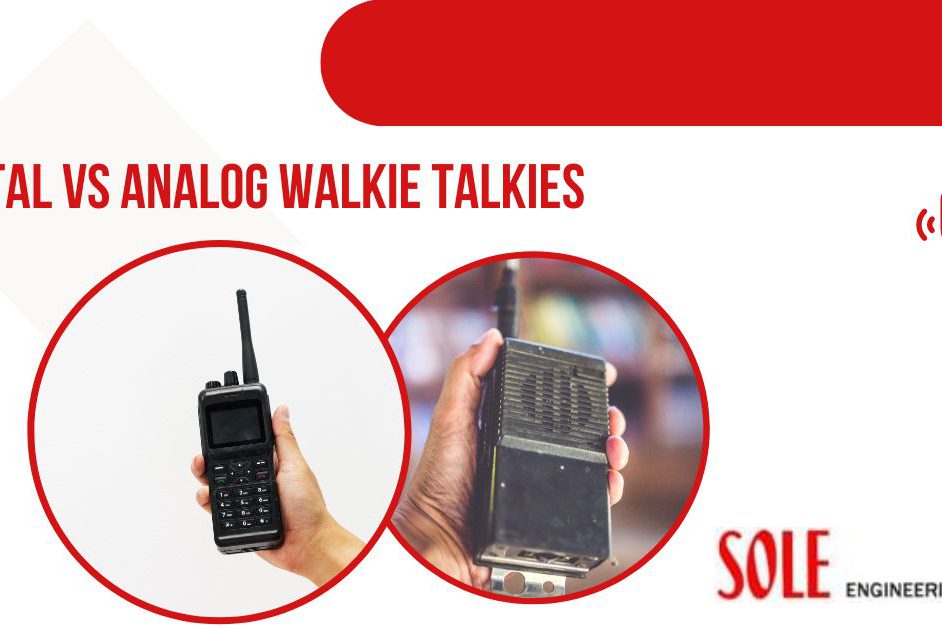Introduction:
In a world that’s constantly advancing technologically, the choice between analog vs digital walkie talkies has become a pivotal decision, even in the realm of walkie-talkie radios. Whether you’re an outdoor enthusiast, an emergency responder, or someone who just loves to stay connected, understanding the differences between digital and analog walkie-talkies is crucial. Let’s embark on a journey through the waves of communication and explore the merits and demerits of both technologies.
Analog Vs Digital Walkie Talkies: The Analog Legacy
Analog walkie-talkies have a longstanding history as reliable communication tools. Simple and straightforward, analog radios transmit information through continuous waves, making them easy to use and understand. Their simplicity often translates into durability and a longer battery life, making them a preferred choice in certain scenarios.
However, analog technology also has its limitations. Analog signals are susceptible to interference, resulting in potential audio distortions and reduced range. Additionally, analog communication lacks the advanced features that digital technology brings to the table.
Analog Vs Digital Walkie Talkies: The Digital Revolution

Digital walkie-talkies represent the technological evolution of communication devices. These devices convert voice into digital signals, allowing for clearer and more secure transmissions. Digital radios are equipped with advanced features like noise cancellation, encryption, and the ability to transmit data alongside voice communication.
One of the significant advantages of digital walkie-talkies is their resistance to interference. Digital signals maintain clarity even in challenging environments, providing a more reliable communication solution in urban areas or places with heavy electronic interference.
The Trade-offs:
Choosing between digital vs analog walkie-talkies depends on your specific needs and preferences. Let’s break down some key considerations:
1. Analog Vs Digital Walkie Talkies: Audio Quality
– Analog: Simple and traditional, but prone to interference.
– Digital: Crisp and clear, even in noisy environments.
2. Range:
– Analog: Better range in open spaces but may suffer in urban environments.
– Digital: Consistent range with less susceptibility to interference.
3. Battery Life:
– Analog: Typically, longer battery life due to the simplicity of continuous transmission.
– Digital: Shorter battery life, but advancements are being made to improve efficiency.
4. Analog Vs Digital Walkie Talkies: Features
– Analog: Basic functionality with limited additional features.
– Digital: Enhanced features like text messaging, GPS tracking, and selective calling.
Top Analog & Digital Walkie Talkie Radio Provider in Malaysia
As technology trends shift towards digital solutions, Sole Engineering remains steadfast in its commitment to analog communication. While acknowledging the advancements in digital technology, the company recognizes the enduring relevance and reliability of analog and digital walkie-talkies, particularly in scenarios where simplicity and robustness are paramount.
Sole Engineering’s position as a top analog and digital walkie-talkie radio supplier in Malaysia is a testament to its unwavering dedication to quality and customer satisfaction. With a legacy of excellence and a focus on meeting the unique communication needs of its clientele, Sole Engineering continues to play a pivotal role in shaping the analog and digital communication landscape in Malaysia. As the industry evolves, the company stands poised to lead with innovation and a steadfast commitment to delivering reliable communication solutions.
Conclusion:
The choice between analog vs digital walkie talkies ultimately boils down to your specific requirements and operating environment. Analog radios, with their simplicity and reliability, remain a solid choice for certain applications. On the other hand, digital walkie-talkies offer a plethora of features and superior audio quality, making them ideal for professional use and scenarios where clear communication is paramount.
As technology continues to advance, the debate between digital and analog communication will persist. The key is to weigh the pros and cons, considering your unique needs, and choose the walkie-talkie that best aligns with your communication goals. Whether you’re navigating the great outdoors or coordinating a critical operation, the right choice in walkie-talkies can make all the difference in staying connected.







